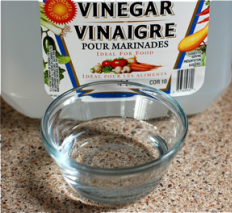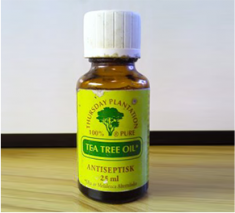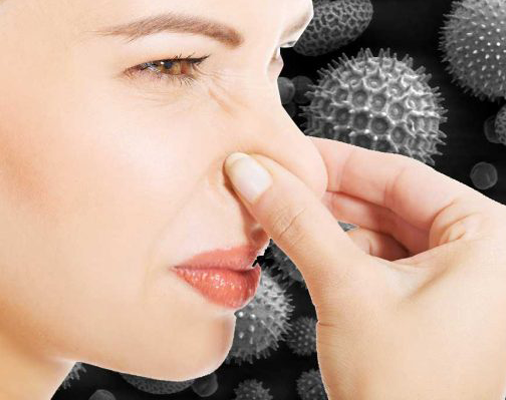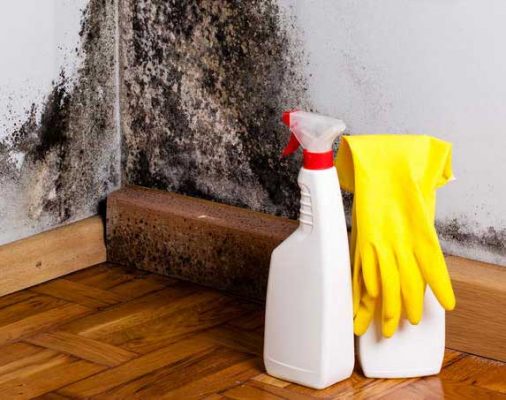Mould not only looks horrible, it can be a serious health hazard, which is why we should get rid of it as quickly as we can. 'Mycotoxins' are a toxic substance produced by some moulds that can result in allergy-like symptoms, including shortness of breath, eczema and asthma, and, in the worst of cases, it can inhibit the body’s immune system.
For years, bleach has been the first product we’ve pulled out of the cupboard to treat mould. But the mould we see is actually the mould by-product, or mould excrement, if we want to apply a descriptive term. Living mould is microscopic and is invisible to the naked eye. When we use bleach to clean mould, we take the colour out of the mould 'by-product' and kill most of the mould, but we don’t kill all of the mould. Cleaning with bleach typically removes 80% of the living mould. This leave 20% of the now invisible mould shooting out mould spores and dangerous mycotoxins.
THE BEST WAY TO KILL MOULD
Small batches of mould can be effectively and easily treated with one of two household products: Vinegar Solution and Tea Tree Oil Solution.
To apply both products, decant the diluted products into a spray bottle with a fine spray setting and apply liberally to the mould affected area. It’s important to thoroughly 'wet-out' the mould affected area, so don’t hold back! After 20 minutes, use warm water to gently sponge off the mould.

A solution of 80% white fermented vinegar (available in supermarkets) and 20% water.

A 3% tea tree oil solution consisting of 1 teaspoon of tea tree oil and 2 cups of warm water. Shake well before use.
What if there is a still a mark after I remove the mould?
Whilst the tea tree oil or vinegar will kill the mould, the discolouration from the mould by-product may be harder to remove, particularly on porous materials like gyprock. You may need to use more aggressive methods to remove the stain that the mould has left behind.
Now is a good time to treat the mould stain with bleach or otherwise try sugar-soap. If that fails, then re-painting may be required.
What if I have a major mould issue?
If you’ve got a moderate to large mould issue (bigger than 1 square metre), then there’s a good chance the mould is growing in hard to reach places like wall cavities. In cases like this, there’s also likely to be a large amount of mould spores in the air.
Moderate to major mould issues are much harder to treat and the potential health implications are significant. In these cases, we recommend calling a professional mould remediator. E-Dry offers a safe, quick and highly effective service that’s perfect for cases of significant mould contamination.
Mould Can Be A Killer
Did you know that mould makes up 25% of the earth’s biomass? We are in contact with mould every day, but at levels that are tolerable for our body’s immune system. Mould spores are tiny particles that mould releases into the atmosphere. The mould spores colonise when they find the right growing conditions (moisture plus a food source), continuing themould's life cycle.
Most types of mould are not toxic to people, however, some varieties of mould produce mycotoxins, which are carried in the mould spores. These mycotoxins can bring on worrying health effects including allergic reactions or respiratory issues.
Given the potential health implications, safety precautions must be taken when treating mould. We recommend using a respirator mask and safety goggles. Given that larger areas of mould contamination pose significant health risks, we strongly recommend calling a professional.


Prevention is better than cure
A mouldy smell may be the only clue that you have a potential mould problem developing. If you detect a mould odour, don’t ignore it. Start inspecting your house for evidence of mould or moisture that could lead to a future mould issue.
Mould reproduces by expelling microscopic spores into the air. If the spores land somewhere that contains a food source and moisture, they start growing, digesting and destroying.
TIPS FOR PREVENTING MOULD
Removing moisture is key to preventing mould growth. Here’s a quick checklist you can work through around the home to prevent mould issues:
- If you’ve got a water leak, fix it as soon as possible;
- Investigate any water marks that you can see on paint or carpet. Make sure you know where they came from and be sure that the water source has been stopped;
- If you see use a gas heater and get a lot of condensation, then we suggest investing in a reverse cycle air-conditioner that pumps out dry air;
- Keep exhaust fans in the laundry and bathroom clean so they work effectively;
- Whirly birds in the ceiling are great for removing hot air and moisture from roof cavities;
- Keep foundations dry by providing/installing drainage or sloping the ground away from the foundation.
If you’ve got a mould issue and you’d like help to treat it, call E-Dry on 13 33 79 or book our mould remediation service online. E-Dry's mould treatment system removes the living mould and mould spores in the air, preventing re-colonisation.

SUBSCRIBE TO OUR NEWSLETTER
Sign up for email promotions, tips and special offers.



